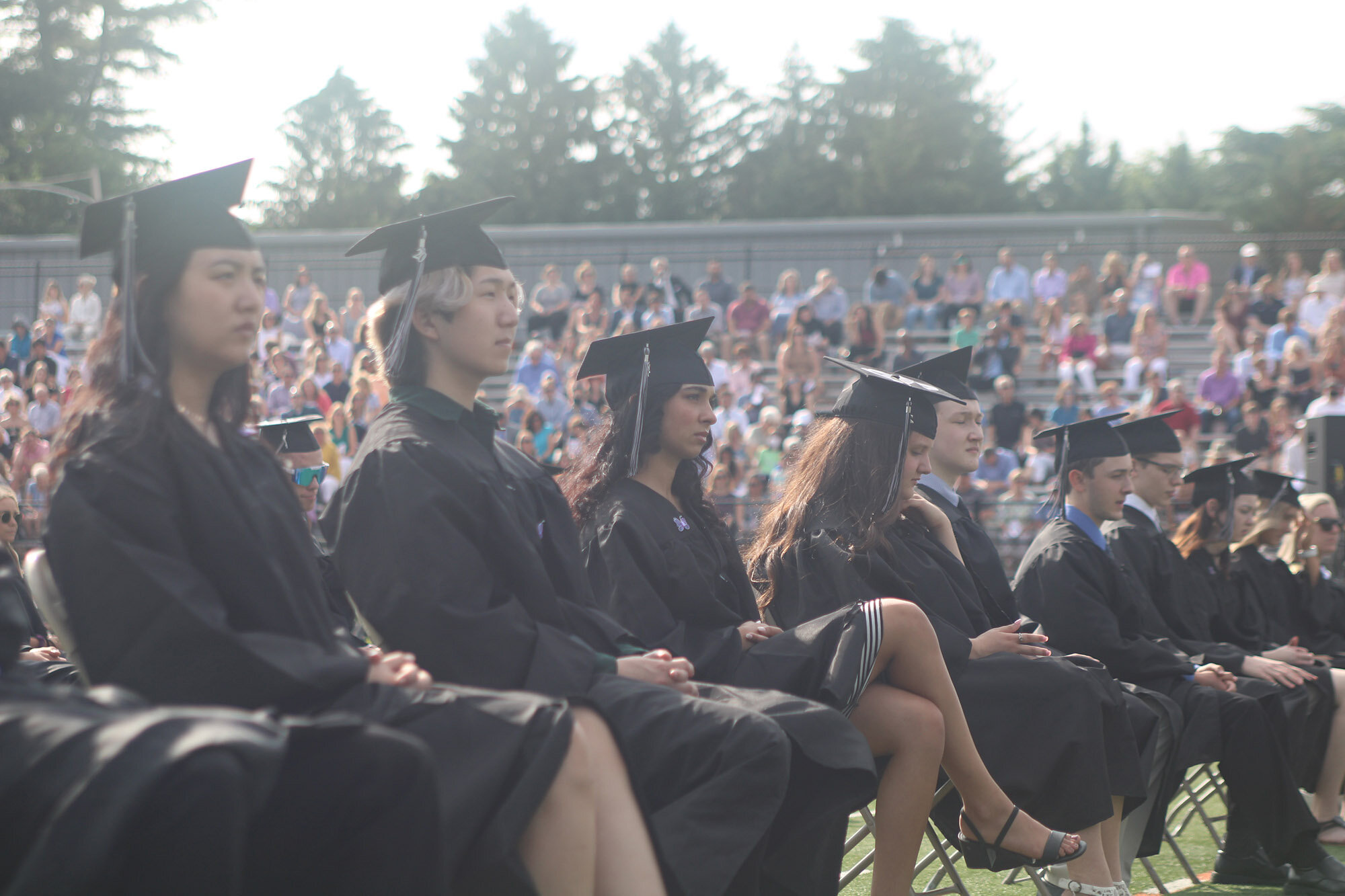Masked Narratives: Documenting Individuals in a Time of Change
“Masked Narratives” is an Instagram project that tells the pandemic stories of Swarthmore College students. Image by Trinity Townsend
For much of 2020, the Swarthmore College community was reduced to digital faces in a virtual classroom. I wanted to hold on to the bits of our humanity that might otherwise be lost in a cacophony of statistics (Covid-19 cases, deaths, vaccine rollout data), so I created “Masked Narratives,” an Instagram project that documents the lives and perspectives of members of the Swarthmore community.
I started last winter, a semester and a half into virtual learning. I asked fellow students about the transition to online classes and how they were managing school in a global pandemic. I asked about struggles they faced, changes to their routines, and their experiences learning from home (or away from Swarthmore). Lastly, I asked what they are grateful for.
I quickly realized how little I knew about many of the people I saw on a regular basis.
In every conversation, struggle was an underlying theme. College students are struggling as we attempt to succeed in the face of a future that feels uncertain. It’s like driving through a dense fog with no headlights. Given the constant pressure to be productive, it is difficult to take time to reflect and understand the weight of the lives around us. “Masked Narratives” is my attempt to create a space of refuge and reflection.
I have interviewed students from countries, cities, and cultural backgrounds different from my own. Swarthmore College’s student body is diverse, and I wanted to highlight the perspectives of those whose ethnic, racial, and cultural identities are least represented at the college, and whose experiences might otherwise be overlooked by their peers and professors. Photos and videos — paired with short captions that tell their stories in their own words — make the posts easy to consume.
Sophomore Patricia Bautista, a Dominican student from Washington Heights in New York City, told me, “I felt so confined to the small space of an apartment, and I didn’t leave my room that often. The first time I went outside was the first week of May. I just went for a quick walk because I was nervous. At that time, my dad was the only one leaving to do grocery shopping.”
Ethan Moreland, a sophomore from Philadelphia, told this story: “We were in class this one random Thursday, and my mom walks in my room: ‘Ethan! They raided the Capitol.’ I went ‘Hmm. Back to class.’ That was the weirdest thing in the world. We were on a break while the raid was going on. When class started again, my professor didn’t even bring it up. We learned about ancient Spain like it was regular.”
Lydia Churchill, a junior from Divonne-les-Bains, France, reported, “The way I’m perceived by my family, and my identity when I’m around them, is very different from my identity at Swarthmore and in friendships. Being back here on campus, I feel so revitalized — like I’ve found a piece of my identity that was lost.”
I hope this project inspires meaningful conversations. By understanding the circumstances of all the different kinds of people in our community, we can better figure out how to support each other. In a time when community is more important than ever, “Masked Narratives” aims to reduce the mystery of those who work and live around us.
Trinity Townsend is a Swarthmore College sophomore from Marietta, Georgia.
Humans of The Swarthmorean: Trinity Townsend
Trinity Townsend. Photo: Courtney Townsend
I went through a really dark period in the winter when I left the Swarthmore College campus after the fall semester. After leaving, I realized that I didn’t want classes and deadlines to make up my days. I wasn’t enjoying it in the way that I should have been. It just wasn’t expressive enough for me.
You wake up and you decide what clothes to put on, how to do your hair, what to eat, and that’s creation. Reading a text and discussing it felt like the recycling of ideas to me.
But school has been the biggest factor in my life for as long as I can remember. Before I came to college, I was in boarding school. My goal since middle school was to get to college. Realizing that I don’t think I want to be in a traditional college — and that it wasn’t financially sustainable for me — really messed my head up. The world is so much bigger when it’s not structured by a school day or an institution. I didn’t know who I was outside of being a student.
I’m only 19, but I want to contribute something different. I want to contribute something that can’t be bought and sold, something intangible.
Turning away from everything that you know to be you can be so strange, but you can almost find a new life. You come back, and you say, well, how do I want to move forward? How do I want to live as a person in this world now? What do I want to contribute to this earth while I’m living here?




